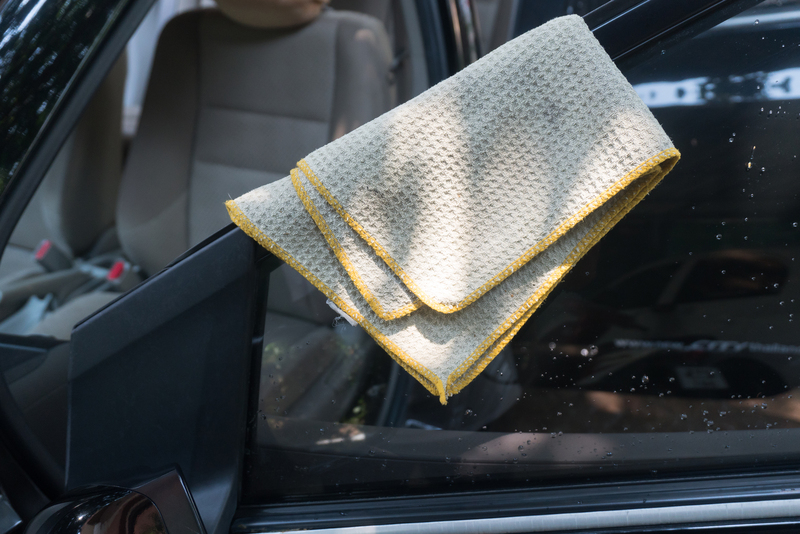10 Practical Ideas to Maintain Carpets Without Dog Hair
Carpets add warmth and comfort to our homes, but for pet owners, especially those with dogs, keeping carpets free of irritating dog hair can be a real challenge. Dog hair on carpets not only affects the appearance of your flooring, but it can also aggravate allergies and reduce indoor air quality. If you love your furry companion but want to keep your carpets looking fresh and inviting, this comprehensive guide offers 10 effective and practical ways to maintain carpets without dog hair. Let's dive in!

Why Is Dog Hair Hard to Remove from Carpets?
Dog hair is notorious for embedding itself into carpet fibers, making it difficult to remove with standard cleaning methods. The hair's texture, the static charge it can hold, and the frequent shedding by some breeds all contribute to the persistent issue of dog fur accumulation on carpets. Understanding the specific challenges can help you choose the right solutions for a cleaner home.
1. Regular Vacuuming with Pet-Specific Attachments
The cornerstone of maintaining carpets without dog hair is consistent vacuuming. But not just any vacuum will do; invest in a quality vacuum cleaner designed for pet owners.
- HEPA filters help trap fine dander and allergens, improving air quality.
- Brush rolls with stiff bristles are more effective at agitating carpet fibers and loosening embedded dog hair.
- Look for models with specialized pet attachments or turbo brushes for maximum efficiency.
For best results, vacuum high-traffic areas at least two to three times per week. Regular vacuuming also helps to keep the rest of your home cleaner by minimizing the spread of pet hair.
Optimal Vacuuming Techniques
- Slow, deliberate passes allow the vacuum to pull up more fur.
- Crosshatch the carpet by vacuuming in different directions.
- Empty the vacuum canister frequently to maintain suction power.
2. Use Lint Rollers and Carpet Rakes for Spot Cleaning
Pet hair can be stubborn, sometimes resisting even the best vacuums. Lint rollers aren't just for clothing; they work wonders for quick clean-ups on carpets too. For larger areas, try a carpet rake or pet hair remover brush.
- Run the lint roller over problem spots where dog hair collects, such as near dog beds or corners.
- A rubber-bristled carpet rake can gather large amounts of embedded fur, making removal easier.
- Use these tools between scheduled vacuuming for consistent results.
3. Strategic Grooming Practices
One of the most effective ways to control dog hair on carpets is to address the issue at its source. Regular grooming significantly reduces shedding by removing loose fur before it settles in your home.
- Brush your dog at least three times a week--daily for heavy shedders.
- Consider professional grooming, especially during seasonal shedding periods.
- Select brushes designed for your dog's coat type, such as slicker brushes, shedding blades, or de-shedding tools.
Pro tip: Always groom your pet outside or in a tiled area to keep loose hair from reaching your carpets.
4. Barrier Mats and Runners
Placing area rugs, mats, or runners in high-traffic zones can dramatically reduce the amount of dog hair embedded in your main carpets. These barriers work as the first line of defense, capturing fur and dirt before they can reach your carpet fibers.
- Install washable runners near doors, entryways, and hallways where pets frequently walk.
- Shake out and launder mats regularly to prevent accumulation.
- Select materials like low-pile or indoor-outdoor rugs for easy cleaning.
5. Washable Carpet Tiles for Easy Maintenance
For pet owners, modular or washable carpet tiles are a smart choice. If a section accumulates excessive fur or gets stained, you can simply remove the affected tile and wash or clean it individually.
- Choose stain-resistant, machine-washable tiles for ultimate convenience.
- Rotate or rearrange tiles periodically for even wear and easier cleaning.
6. Anti-Static Sprays and Solutions
Dog hair clings to carpets partly because of static electricity. Applying anti-static sprays can help reduce the cling, making it far easier to remove hair with a vacuum or broom.
- Lightly mist commercial anti-static sprays over your carpets, following manufacturer instructions.
- Alternatively, make a DIY solution: Mix water with a small amount of fabric softener, then apply via spray bottle.
- Do a spot test first to check for colorfastness.
7. Keep Your Dog's Living Areas Clean
Reducing the amount of hair your dog brings onto the carpet starts with their own environment. Regularly clean your pet's bedding and favorite lounging spots. This minimizes the transfer of fur from one surface to another.
- Wash dog beds, cushions, and blankets frequently.
- Use covers that can be easily tossed in the washing machine.
- Vacuum or shake out soft toys, especially those your dog carries to the carpet.
8. Establish Pet-Free Carpet Zones
Train your dog to avoid specific areas of your home, particularly spaces with high-value carpets or rugs. Creating pet-free zones may reduce dog hair on your prized carpeting.
- Use baby gates or pet barriers to limit access.
- Provide alternative comfort areas for your pet to relax off the carpet.
While this method may require some initial training, it's a long-term solution for protecting your investment and preserving the look of your carpets.
9. Deep Cleaning and Professional Help
Even with the best pet hair management practices, periodic deep cleaning is essential. Over time, oils, dander, and deeply embedded fur can accumulate.
- Steam cleaners or carpet shampooers lift stubborn hair and dirt from carpet fibers.
- Consider professional carpet cleaning every 6-12 months, depending on pet activity.
- Request pet-specific treatments to tackle lingering odors and stains.
Regular deep cleaning will keep your carpets looking (and smelling) fresh, while also prolonging their life.
10. Air Purifiers and Humidifiers
While it might not seem directly related, maintaining optimal indoor air quality and humidity levels can help reduce pet hair and dander in your environment.
- Air purifiers with HEPA filters trap airborne hair and dander before they settle on your carpet.
- Maintaining proper humidity (about 40-60%) prevents static electricity, which helps dog hair release more easily from carpets and rugs.
This multi-pronged approach means less hair is floating around--and less ending up embedded in your carpet.

Bonus Tips: Extra Ideas for Pet-Friendly Carpet Maintenance
- Choose carpet colors and textures that hide dog hair more effectively, such as multicolored, low-pile, or patterned options.
- Invest in slipcovers or throws for sofas and chairs to minimize hair transfer from furniture to flooring.
- Train your pup to enjoy regular grooming sessions--or even teach them to "wipe their paws" on mats after coming in from outdoors!
Conclusion
Owning a dog doesn't mean you have to choose between your beloved pet and pristine carpets. By implementing these practical ideas to remove dog hair from carpets--ranging from effective cleaning routines and grooming habits to smart home design--you can strike a balance between a pet-friendly household and beautiful, hair-free flooring.
Remember, the key is consistency and choosing solutions that fit your lifestyle and your dog's needs. With the right combination of preventative strategies and routine maintenance, your carpets can stay fresh, inviting, and (almost) free of dog hair.
If you found these tips useful, be sure to share this guide with other pet lovers struggling with dog hair on carpets. Your carpets--and your allergy-prone friends--will thank you!